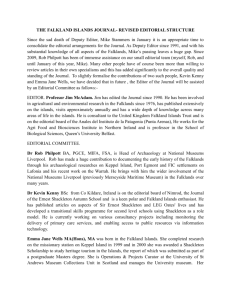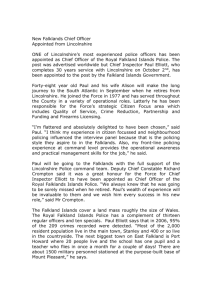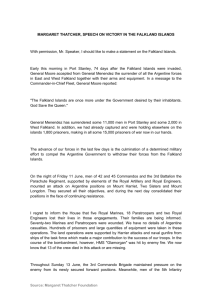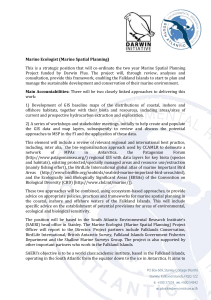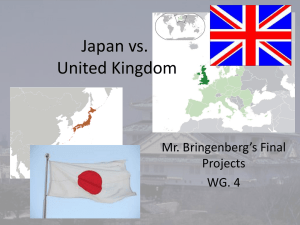Cold Water Tourism: The Falkland Islands
advertisement
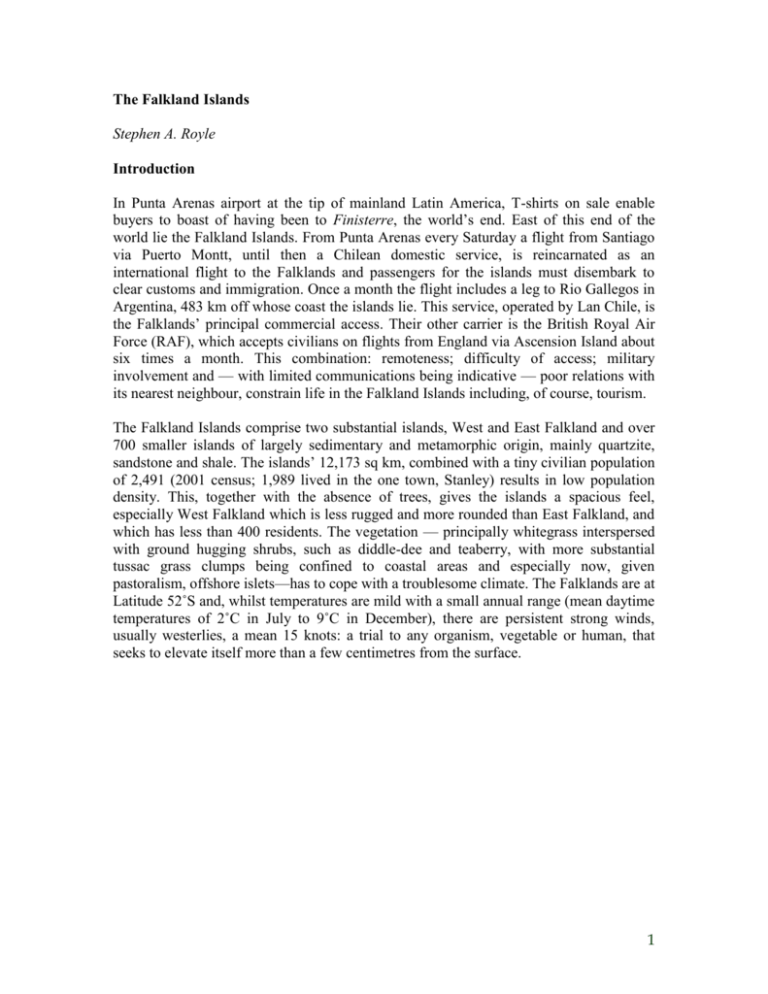
The Falkland Islands Stephen A. Royle Introduction In Punta Arenas airport at the tip of mainland Latin America, T-shirts on sale enable buyers to boast of having been to Finisterre, the world’s end. East of this end of the world lie the Falkland Islands. From Punta Arenas every Saturday a flight from Santiago via Puerto Montt, until then a Chilean domestic service, is reincarnated as an international flight to the Falklands and passengers for the islands must disembark to clear customs and immigration. Once a month the flight includes a leg to Rio Gallegos in Argentina, 483 km off whose coast the islands lie. This service, operated by Lan Chile, is the Falklands’ principal commercial access. Their other carrier is the British Royal Air Force (RAF), which accepts civilians on flights from England via Ascension Island about six times a month. This combination: remoteness; difficulty of access; military involvement and — with limited communications being indicative — poor relations with its nearest neighbour, constrain life in the Falkland Islands including, of course, tourism. The Falkland Islands comprise two substantial islands, West and East Falkland and over 700 smaller islands of largely sedimentary and metamorphic origin, mainly quartzite, sandstone and shale. The islands’ 12,173 sq km, combined with a tiny civilian population of 2,491 (2001 census; 1,989 lived in the one town, Stanley) results in low population density. This, together with the absence of trees, gives the islands a spacious feel, especially West Falkland which is less rugged and more rounded than East Falkland, and which has less than 400 residents. The vegetation — principally whitegrass interspersed with ground hugging shrubs, such as diddle-dee and teaberry, with more substantial tussac grass clumps being confined to coastal areas and especially now, given pastoralism, offshore islets—has to cope with a troublesome climate. The Falklands are at Latitude 52˚S and, whilst temperatures are mild with a small annual range (mean daytime temperatures of 2˚C in July to 9˚C in December), there are persistent strong winds, usually westerlies, a mean 15 knots: a trial to any organism, vegetable or human, that seeks to elevate itself more than a few centimetres from the surface. 1

